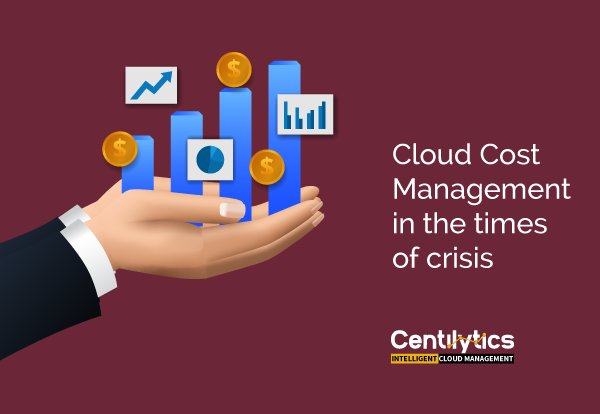One of the greatest benefits of running in the cloud is being able to scale up and down to meet demand and reduce operational expenditures. And that’s especially true when you’re expecting unexpected changes in customer demand leading to a surge in your cloud usage. To overcome the challenges involved in these difficult times, companies are evaluating the implementation of cloud-based technologies. On the other hand, those are already benefitting from cloud services, are taking essential cost saving measures using all the power provided by cloud computing models.
Cutting costs on system and hardware requirements (such as maintenance and management), is one of the priorities to ensure business continuity. From products to carry out optimum remote work to leveraging services as per unique case cases, public cloud solution is the only answer in these unprecedented times.
In this article, you could find few practices to help you rightsize your cloud costs to the needs of your business so you can get through these challenging times.
Find correlations between your cloud costs and business needs
The “on-demand” is what entices most of the us to cloud but cost have a way of creeping up on you if you’re not monitoring them closely. This is basic also that you cannot proceed to correct something without knowing what is wrong and exactly where. So, once you understand your costs, you can start to put controls in place and optimize spending. Or the least your efforts won’t go haywire.
Go from high level to granular level. Try to look which projects cost the most and understand why. You can begin this drill by co-relating the cost to your business needs. Then dive deeper into the services to understand what type of different resources such as CPU, storage volumes, database etc. are provisioned. This will help you to closely monitor your current cost trends and forecast them over time to prevent overspending.
Play by the rule “pay only for what you really need”
Finding the correlations between your cloud costa and business needs must have served you better visibility in your cloud spend. You need to put this visibility into use by identifying the compute resources that are not providing any business value, in short total useless.
The easiest way to reduce your cloud bill is to get rid of resources that are no longer been used. But also be careful to see what impact will deleting a resource have and how easily it can be created if required again. One best practice is to take a snapshot of the instance (backup in cloud terms) before deleting it. Another practice that should come handy is to schedule the instance to auto start and stop. It will save your pennies when you are not using the cloud resources.
Optimize storage costs and performance
When you manage storage in your own data centers, storage costs often get lost in overall infrastructure costs and less time is devoted to do proper cost management. But in the cloud, where storage is billed as a separate line item altogether, paying attention to storage utilization and configuration.
Why you should focus intentionally on storage? This is because when it comes to storage, cloud has come a long way. Cloud storage offers new features that were not there just a year ago. The key places to save costs from storage is that use storage types wisely. Set policies to adjust storage types as per the object requirements. Automate deleting of storage if no longer required.
Tune the data warehouses
Data warehouses is not entirely a modern term, but it is actually revived due to cloud technology. Organizations of all sizes leverage BigQuery for a modern approach to data analytics. Understanding the environment provided by cloud providers with respect to BigQuery is enough to make wise decisions and cut some cost.
You can enforce controls to prevent long queries running forever and racking up costs. There are always limit settings that you can put into use to prevent extra cost.
Take your time but make right decisions only
You need to understand that rushing to take control of everything will never help you. Go step by step, understand, identify and take a strategic approach to take control of the costs. If you do not have the expertise and quickly want to deploy the cost management practices, you can leverage Centilytics – an intelligent cloud management platform. It gives you a complete cost visibility with accurate monitoring and graphical visualizations. It also gives the proactive recommendations after precise analysis and help you automate the best practices.
Book a demo to see the platform in action and start saving costs.


